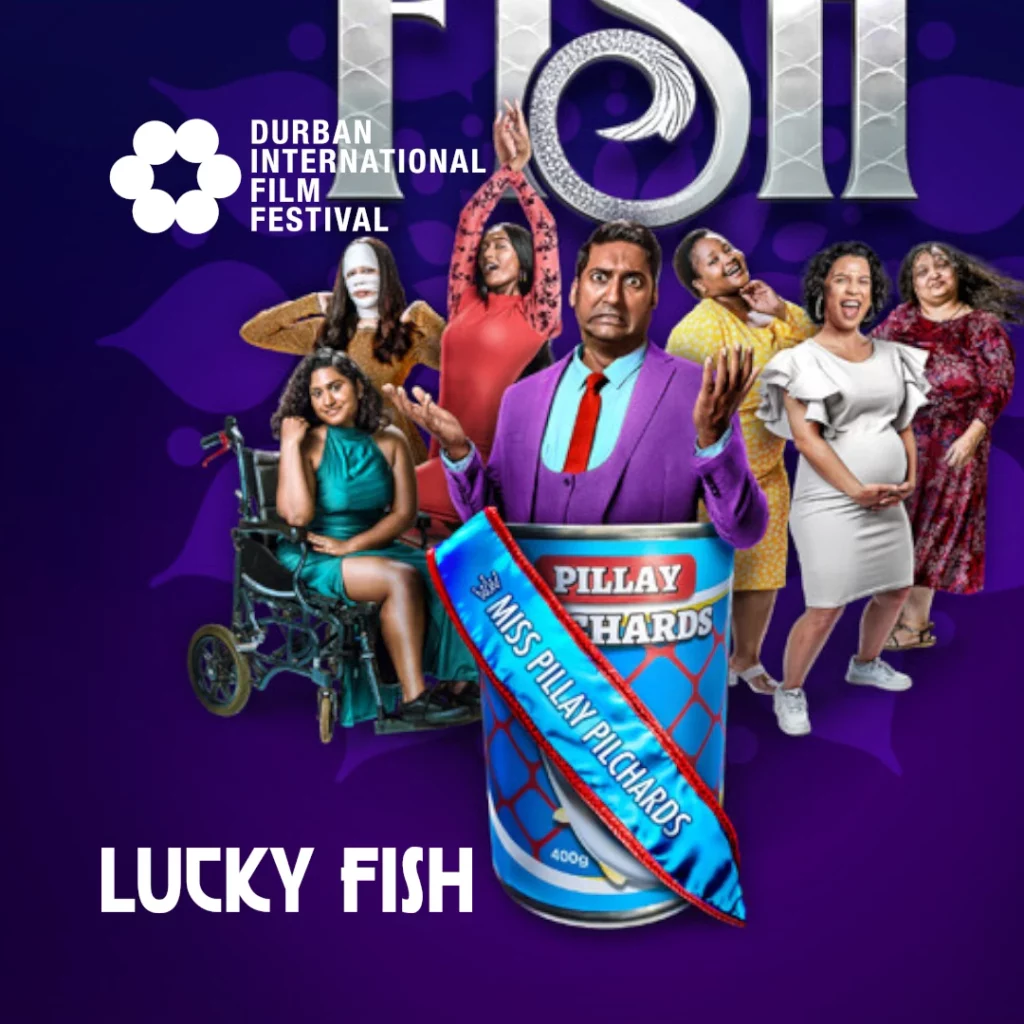By: Tshi Malatji
Lucky Fish is a Milquetoast comedy set in Phoenix, Durban about Sanjay and Samantha Pillay, a pair of siblings who have a lofty goal to organise a beauty contest for their family business, Pillay Pilchards.
These two characters have different motivations and skills for the task. Sam brings most of the moral compass and the actual beautywork, the hair, the makeup, the styling. Sanjay brings quirky and messy business tactics, setting the stage for a routine up-and-down comedy with an underlying message about inner beauty and bringing a troubled family together.
After all, Pillay Pilchards was their father’s company and legacy. Sanjay, although appearing like a run-of-the-mill sleazy businessman, is much more genuine than what meets the eye. On one side, he suavely brushes off scaling debts, low sales and the disappointment of his father. On the other hand, he does take in the constructive criticisms of his sister and friends to grow into much more meaningful priorities as the story develops.
So, ultimately, Lucky Fish is a narrative of Sanjay coming to terms with his own inner beauty, a realisation that the supporting cast already confidently display. While Sanjay’s surface as a tinfish businessman who only supports the pageant for publicity for his pilchards peels away slowly, the film also gives redemption for Sanjay’s loan shark and rivals, notably Arusha Badoo, a beauty queen, who discriminates against ‘undesirables’.
This situates the film as a warm family film that should not always be taken too seriously. Yet, by centering around an all-inclusive beauty pageant, the essentialism of beauty and colourism are put on display through a comedic medium.
Samantha truly believes in the inner-beauty angle of the pageant, even when Sanjay rationalises the need for their business to succeed. Sanjay’s obsession with good media publicity mirrors the society;s obsession with appearance, while Samantha’s insistence on looking deeper within ourselves is a message to be bold in our authenticity.
The film, therefore, challenges stereotypes. The choreographer has a physical disability. The entrants are not light-skinned and thin. The pageant seeks to challenge both prejudice and publicity.
Pilchards are considered a staple in coastal South Africa. The tinfish represents culture and this unknown and underappreciated brand, which is an allegory for taking a chance on people, regardless of our packaging.
Sanjay’s beaten-down car is also a metaphor in the same vein, that the old is not always worse than the new, that all that glitters is not necessarily gold.
At the same time, there are also antagonists who sabotage the pageant. The film is not naive about how society responds to empowerment narratives. Instead, it allows Sanjay to succumb to pressure, be tested by failures and allow his own shell to unravel, revealing someone who deeply cares about his community of Phoenix.
Lucky Fish might make too many but it sufficiently executes its message about “A beauty pageant that has a heart and a soul”. Even something as gross and gooey as tinfish can set the centre stage for a conversation about beauty.
Catch the film at DIFF: https://ccadiff.ukzn.ac.za/diff46/lucky-fish/
This review emanates from the Talent Press programme, an initiative of Talents Durban in collaboration with the Durban FilmMart Institute and FIPRESCI. The opinions expressed in this article are those of the author (Tshi Malatji) and cannot be considered as constituting an official position of the organisers.

